Best Activities in Cuyabeno Wildlife Reserve, Ecuador
If you’re planning a visit to Cuyabeno Wildlife Reserve in Ecuador, then you’ve found the right blog post series. In this particular post, you can read about all the activities that are possible in Cuyabeno, from going on day and night hikes through the Amazon rainforest to visiting a local community and meeting a shaman.
A visit to the Amazon Rainforest is a must if you’re in one of the nine countries the jungle stretches across in South America. There are a few different areas where you can enjoy being in the Ecuadorian Amazon Rainforest. Although we’ll be focusing on Cuyabeno Wildlife Reserve, based on our initial research most tours at other locations will offer a very similar experience to the one we had.
If you’d like to see our Amazon Rainforest adventures, then check out our dedicated Amazon video on our YouTube Channel. For more Ecuador videos check out our Ecuador Playlist.
Disclosure: This post may contain affiliate links, which means we may receive a small commission if you click a link and purchase something. Clicking these links won’t cost you anything, but it will help us to keep this site up and running! Learn more about our affiliate policy.

Introducing Cuyabeno Wildlife Reserve in Ecuador
Cuyabeno Wildlife Reserve is located in the northeast corner of the Ecuadorian Amazon in the provinces of Sucumbios and Orellana, close to the foothills of the Andes. The reserve belongs to the National Protected Areas System.
It’s a biodiversity hotspot with over 540 species of birds, 350 species of fish, hundreds of reptiles and amphibians, and 165 species of mammals. So there’s a high chance that you’ll spot some pink river dolphins, caiman, anacondas or Hoatzins, commonly known as ‘stinky turkeys’. In addition, there are over 12,000 species of plants in Cuyabeno.
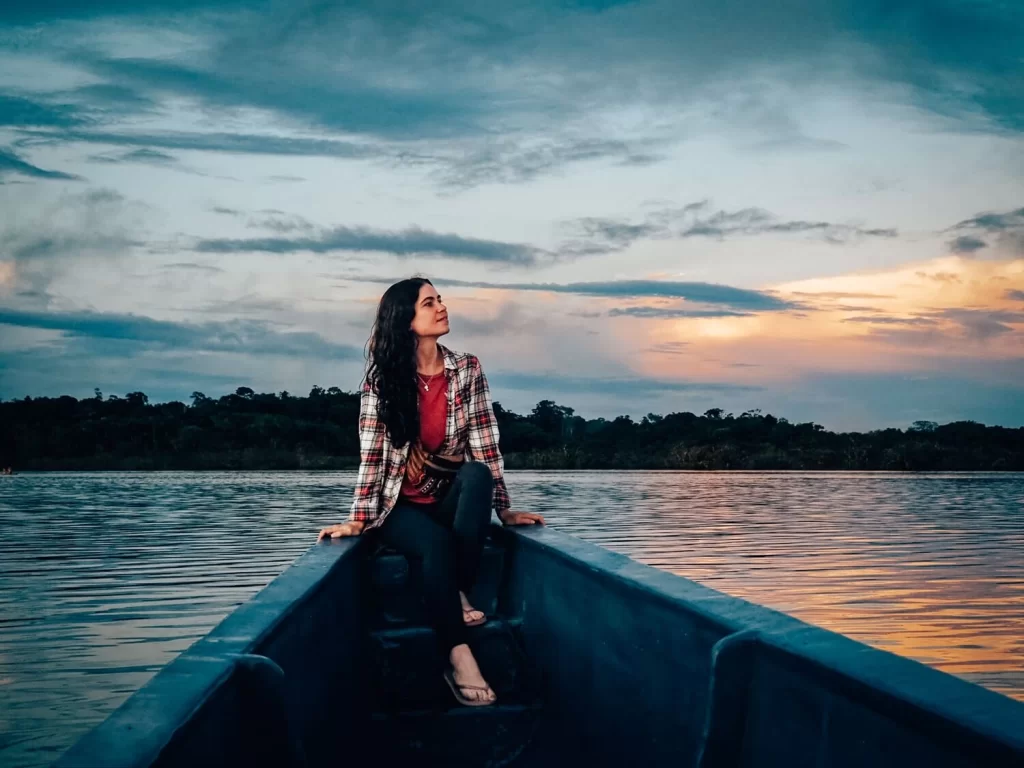
Best Activities in Cuyabeno Wildlife Reserve in Ecuador
Below we’ll detail what kinds of activities you can expect to do during your visit to Cuyabeno in the Ecuadorian Amazon.
1. Sunset Canoe Rides to the Lagoon
Every evening you’ll head out in the canoe just before sunset for some night activities in Cuyabeno. A very common place that most lodges will take you to before that is the beautiful Laguna Grande.
Here you’ll get the chance to enjoy the sunset or go for a swim in the lake. The guides assured us that it’s safe to swim here as most of the dangerous water creatures, such as piranhas, stay closer to the shore.
Apparently, every year between December and January, the lagoon basically dries up due to a lack of rainfall. It’s crazy to think that this could happen in the RAINforest right? Our guide showed us some videos of people having to cross the mud to get to their night hiking spot. It looked like hard work to be honest, but definitely an adventure you’d never forget.
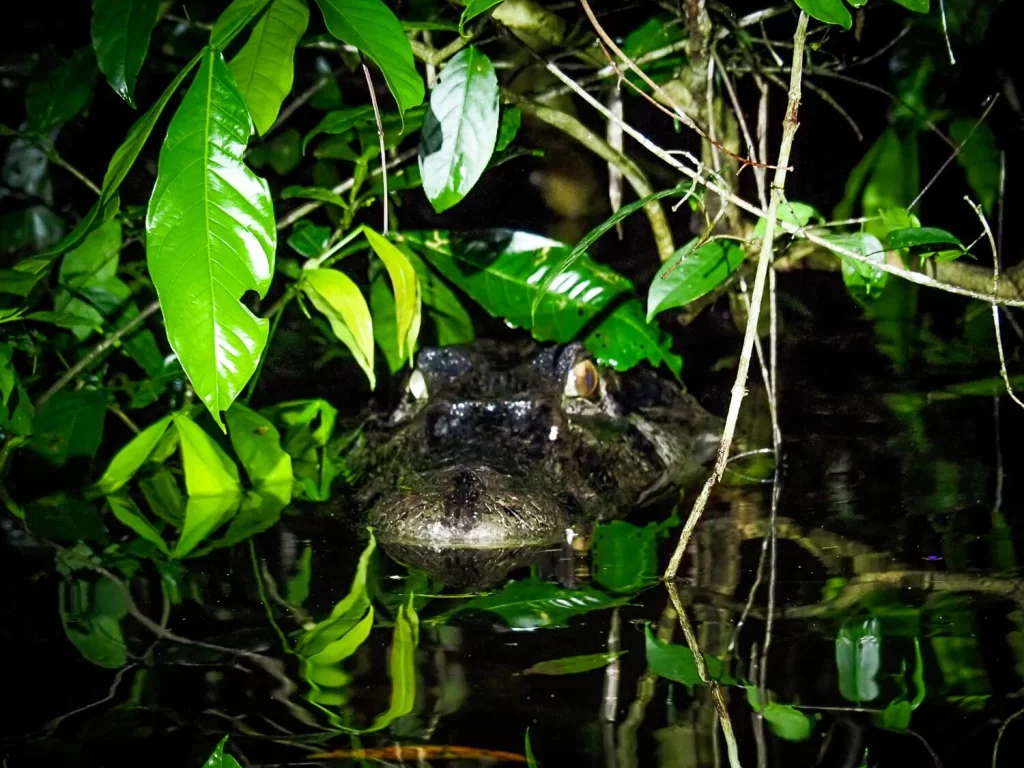
2. Nightly Canoe Rides to Spot Wildlife
After enjoying the sunset from the lagoon, you’ll probably head out in the canoe looking for animals such as anacondas, caiman and tarantulas. There’s no guarantee what you’re going to see at night. However, you’ll be searching for quite some time and will most likely arrive back at your lodge having seen something exciting. Below we’ve shared some of our personal wildlife highlights:
During our nightly canoe rides we spotted a smaller female caiman and a huge male caiman – around 4m’s long, according to our guide. Black caiman are one of the largest predators in the Amazon. The fact that this huge guy was chilling so close to one of the lodges made us certain that we would not go into the water around our lodge. Even though our guides said that we could go for a swim if we wanted. No, thank you!
We also saw a huge tarantula. You probably know that tarantulas are some of the largest spiders in the world. However, seeing one casually chilling on the side of a tree at eye level was something else. It was as big as my hand. We did a thorough check of our room for spiders that night!
We only saw one small anaconda coming to the lodge on our first day. Unfortunately, we didn’t see another one after that. However, we spotted – and when I say we, I mean our guide – a 2 m long common tree boa chilling, well, in a tree. It would’ve been amazing to spot an emerald tree boa, but we can’t have everything. All in all, we were just grateful to be able to see these creatures in their natural habitat.
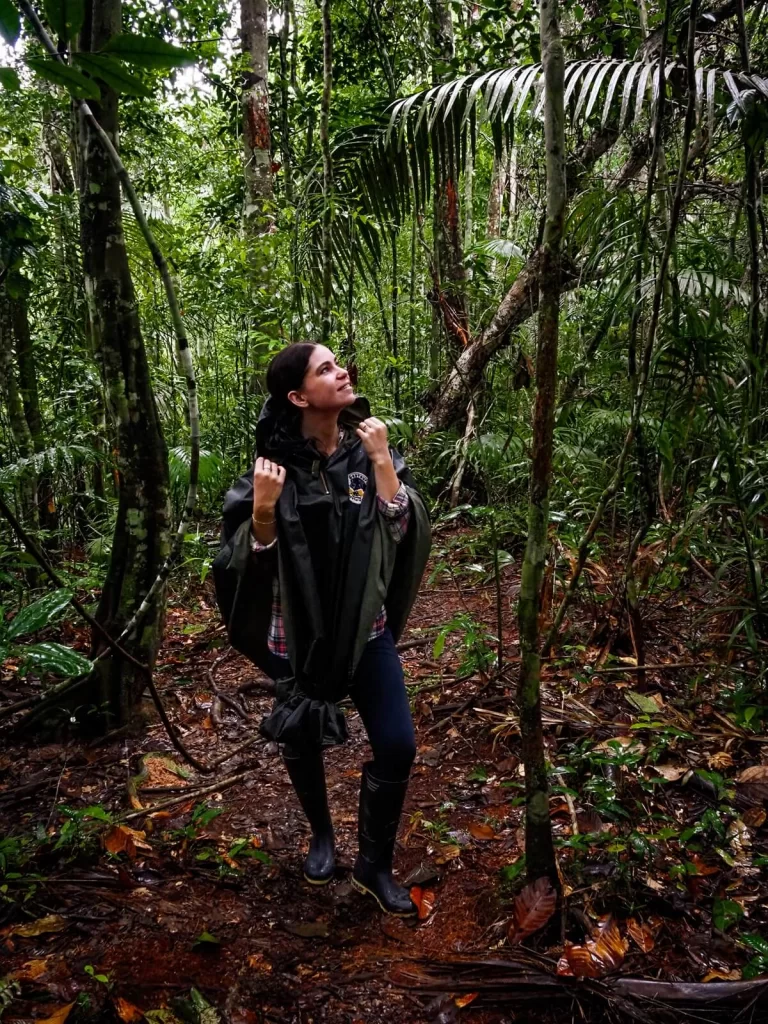
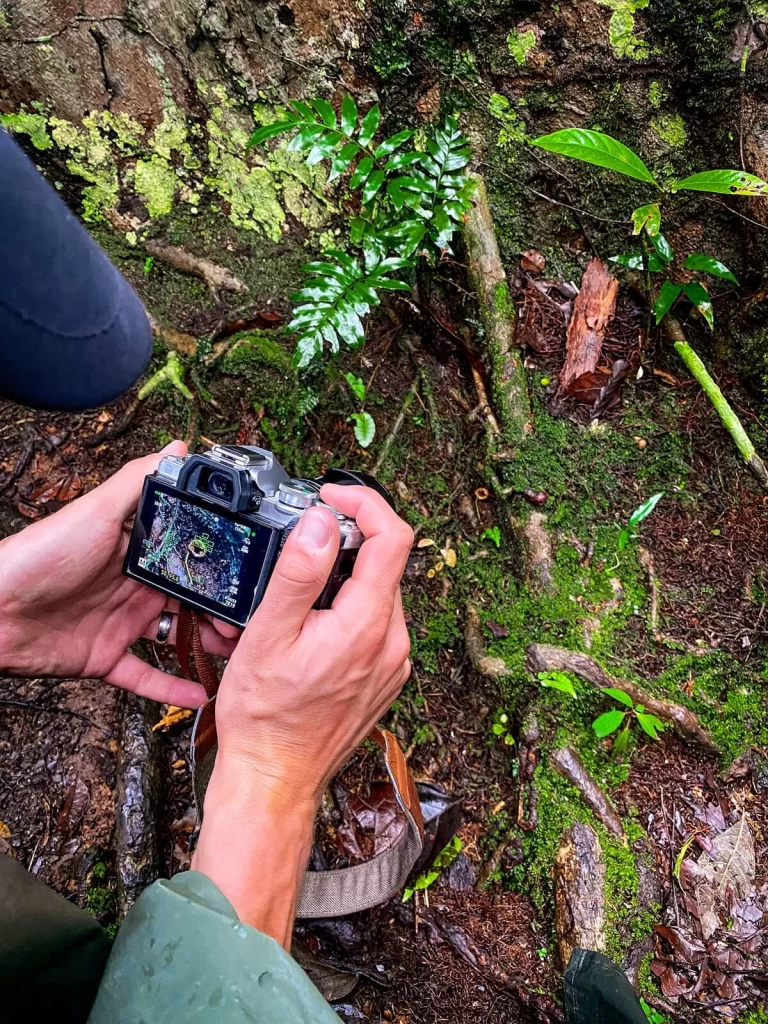
3. A Day Hike Through the Amazon Rainforest in Ecuador
On one of the days, you’ll get the chance to go on a hike through the jungle. After sitting in the canoe so much, getting up and walking around will be a nice change of pace and one of the many exciting activities in Cuyabeno.
Normally the length of the trail is pretty short, but it’ll still take a while to complete it. This is because you’ll be stopping a lot to spot wildlife and gaining valuable knowledge about the animals you’ll see from your guide. If you’re lucky, you might spot some snakes, but it’s more likely that you’d see smaller creatures. They’re just as interesting though. For example, we saw the effects of the cordyceps, a parasitic fungus that can turn ants and other small insects into zombies.
The highlight of the day hike for us was seeing bullet ants up close. They are massive and the pain of their sting is sometimes compared to being shot. Now that’s something we wouldn’t want to experience.
The beauty of these activities in Cuyabeno is that you never know what you’ll encounter during your hike.
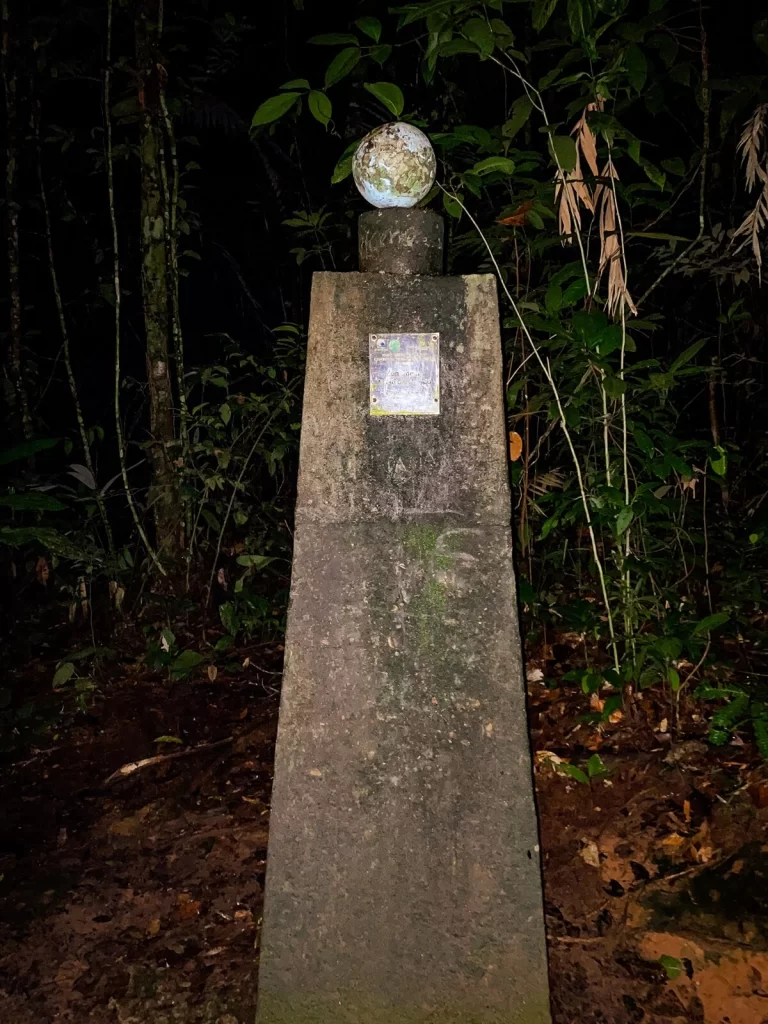
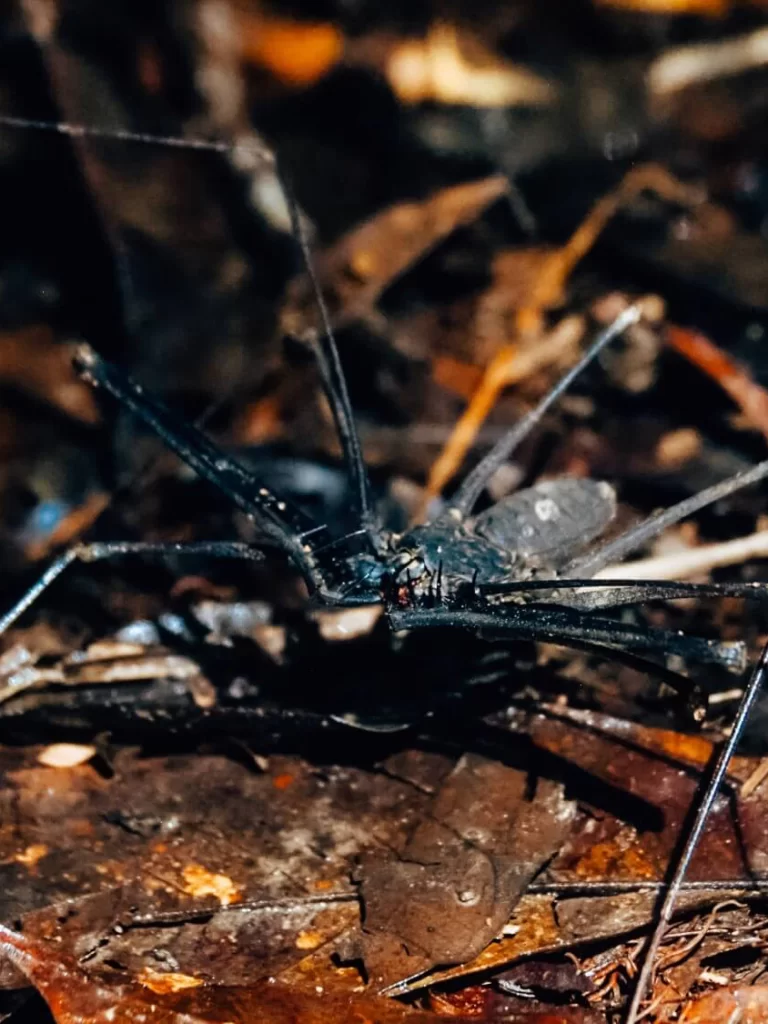
4. A Night Hike Through the Amazon Rainforest in Ecuador
If you did a day hike through the jungle, then you can expect to go on a night hike too at some point during your stay.
We went on a few night walks in Costa Rica, but hiking in the Amazon Rainforest at night was on another level. The rainforest is definitely more alive at night, so you’ll have the best chance to spot some nocturnal creatures.
Similarly to the day hike, you won’t be hiking a very long distance. However, you’ll be stopping quite a lot to get a closer look at some creatures. You’ll see plenty of creepy looking spiders, poisonous frogs and others insects.
At some point you might even pass the equator, so you’ll be ‘hopping’ across the northern and southern hemispheres. After visiting the well known Mitad del Mundo in Quito, it was a nice surprise to be able to cross the ‘line’ in the wilderness too.
Towards the end of your hike, your guide will tell you to switch your flashlight off and stand in pitch darkness for a few minutes. This was one of the most memorable experiences we’ve ever had. Standing in the darkness in the Amazon Rainforest in Ecuador and listening to the sound of the animals who call this place home was crazy.
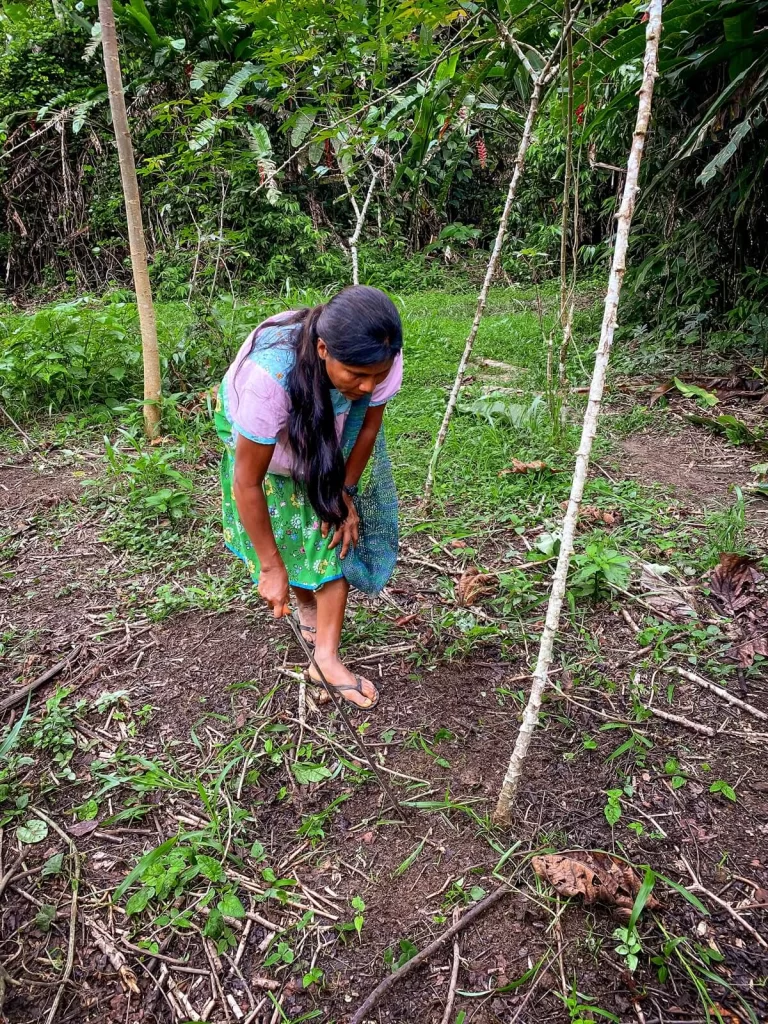
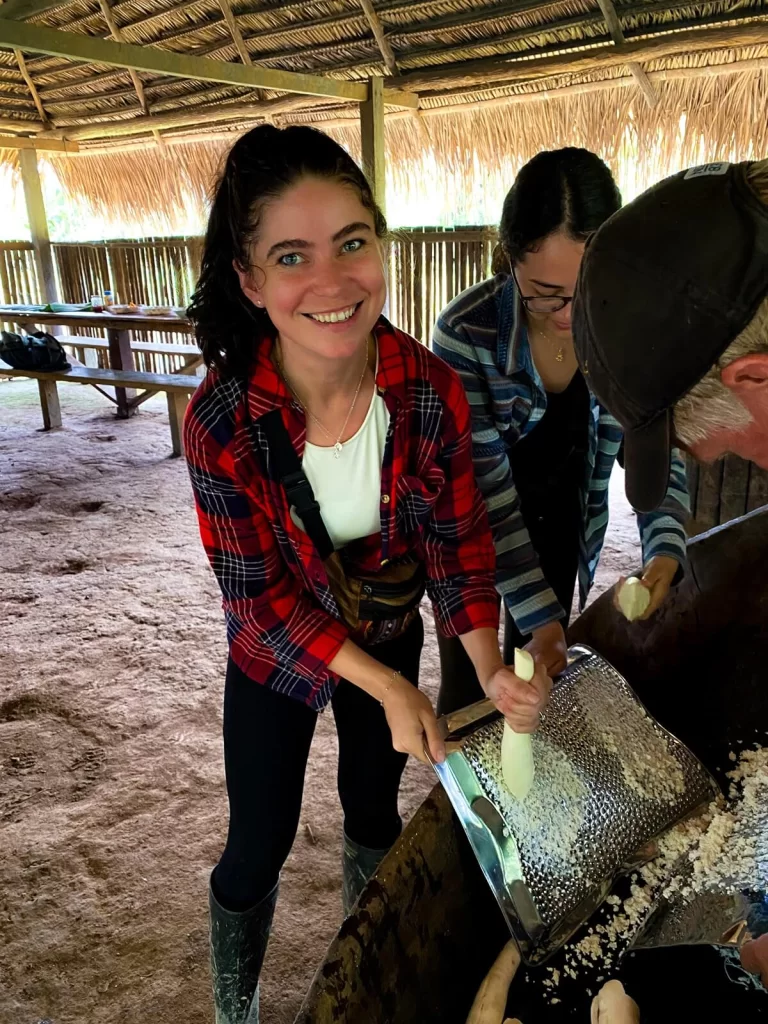
5. A Visit to an Indigenous Community
One morning, you’ll head out to visit the Siona community who live in Cuyabeno. You’ll set off in the canoe, spotting wildlife along the way, before docking the boat and going on a 45-minute long hike. During the hike, you’ll once again be spotting animals, and also learning more about the native plants of the region, before reaching the community.
Once you reach the village, one of the ladies will welcome you and provide you with an interesting insight about her life in the jungle. After you’ve learnt a bit more about her people’s customs and traditions, you’ll get involved in making some delicious yuca-based bread called ‘casabe’ with your host. Seeing the full cooking process from earth to table is something we don’t get to do that often these days.
You may also get the chance to try something a little less common in your everyday diet; grubs. Yes, we know they don’t look very appetising, but sometimes you just have to step out of your comfort zone and take a bite.
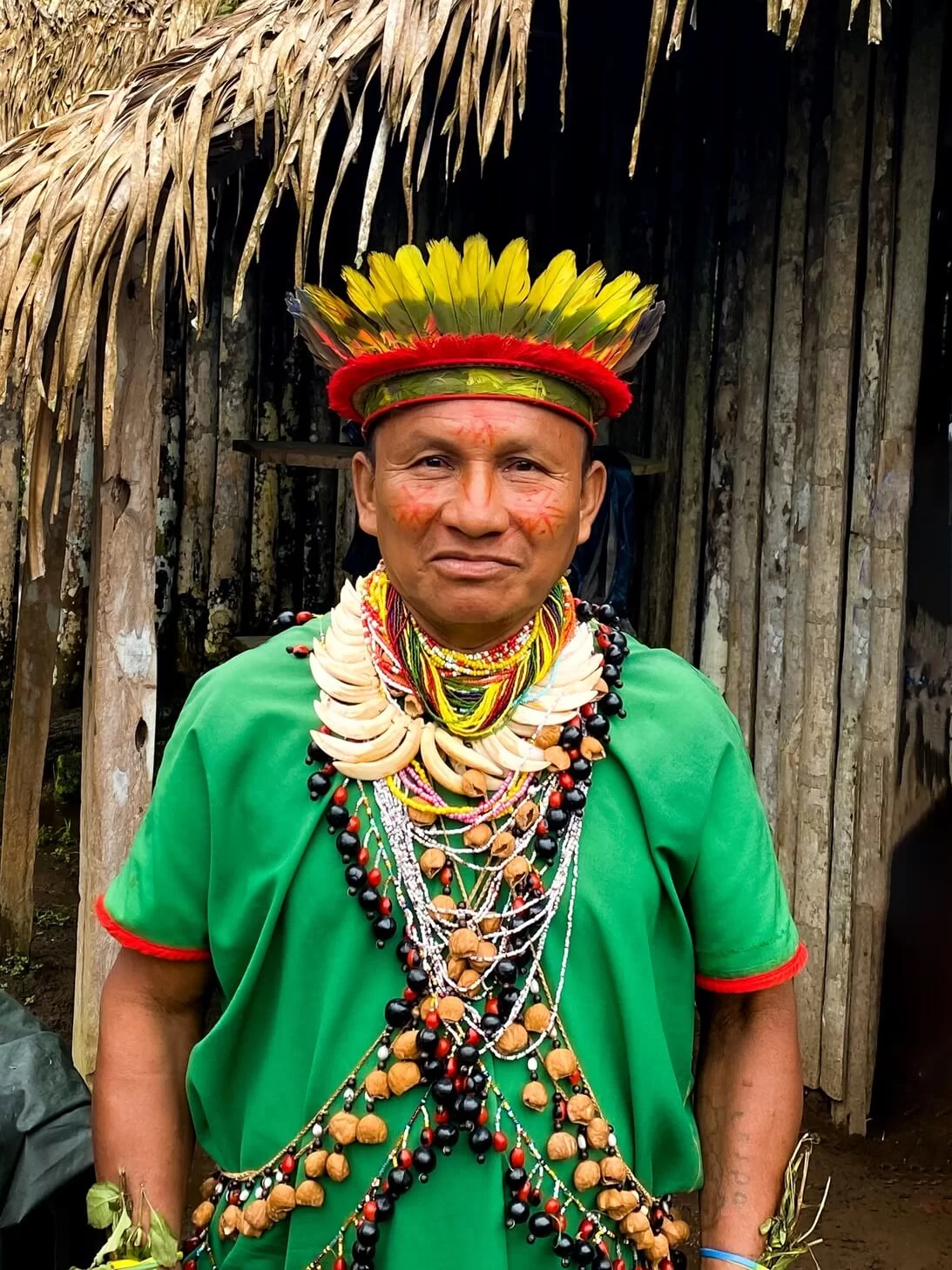
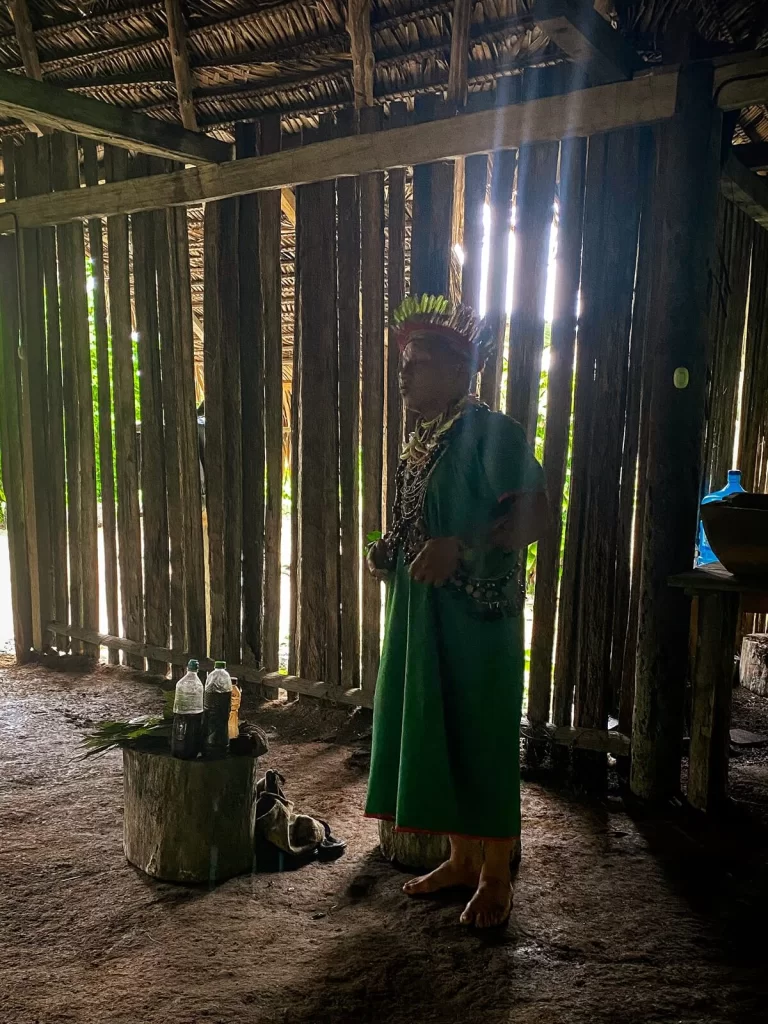
6. Meeting with a Local Shaman
Before returning to your lodge, you’ll walk through the village to meet the local Shaman.
Shamans are highly respected because of their incredible knowledge of the medicinal power of plants. They most often heal the community in a natural way by using a variety of plants and herbs. The medicines are often administered through a ceremony.
During your visit, the Shaman will tell you more about a few of the medicines he uses regularly. Some of them are used to strengthen your immune system or to fight a cold or to sleep better. These are the ones that you’ll be able to try yourself; but remember to also say thank you to Mother Earth (Pacha Mama) for providing us with the ingredients.
We appreciate that not every illness or disease can be cured this way, which the Shaman also emphasized during our visit. However, many prescribed medications are derived from plants used by people in this way for centuries.
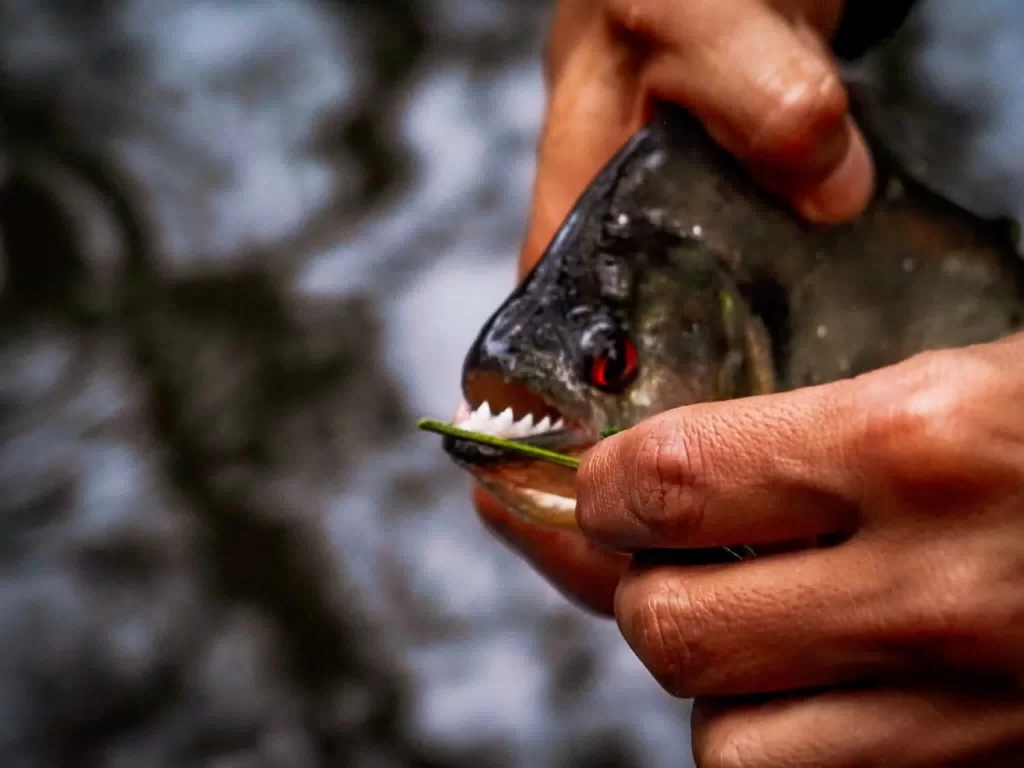
7. Seeing Piranha
Piranha fishing used to be a common activity in the rainforest. A lot of the time the catch was also consumed by visitors. Obviously, with all the environmental issues the Amazon is facing today, most lodges don’t allow tourists to fish for piranhas anymore. We read somewhere that only the indigenous communities are allowed to fish for personal use.
For this reason, the guide will do a catch and release to quickly demonstrate some of the unique features of the piranha such as their razor-sharp teeth. Of course, catch and release fishing is still not great for the animal, but overall we were glad that we were minimising our impact on the ecosystem.

8. Early Morning Bird Watching
Most tours will take you out one morning on a bird watching adventure. It normally starts early in the day, and you’ll be back just before breakfast.
It might not be one of the most exciting activities in Cuyabeno, but the reserve has over 500 different species of birds. (Apparently the exact number is up for debate.) Whilst we didn’t see anything we hadn’t seen before, it was nice to spot a few more of the birds that call the Amazon home. Your guide will also tell you more about the different species.
We found that learning about wildlife in their natural environment is always more interesting and fun than any biology lessons we had at school. It’s because when you see something with your own eyes in its natural habitat, you get a much greater appreciation of how that animal lives than you would seeing it on a screen between four walls.
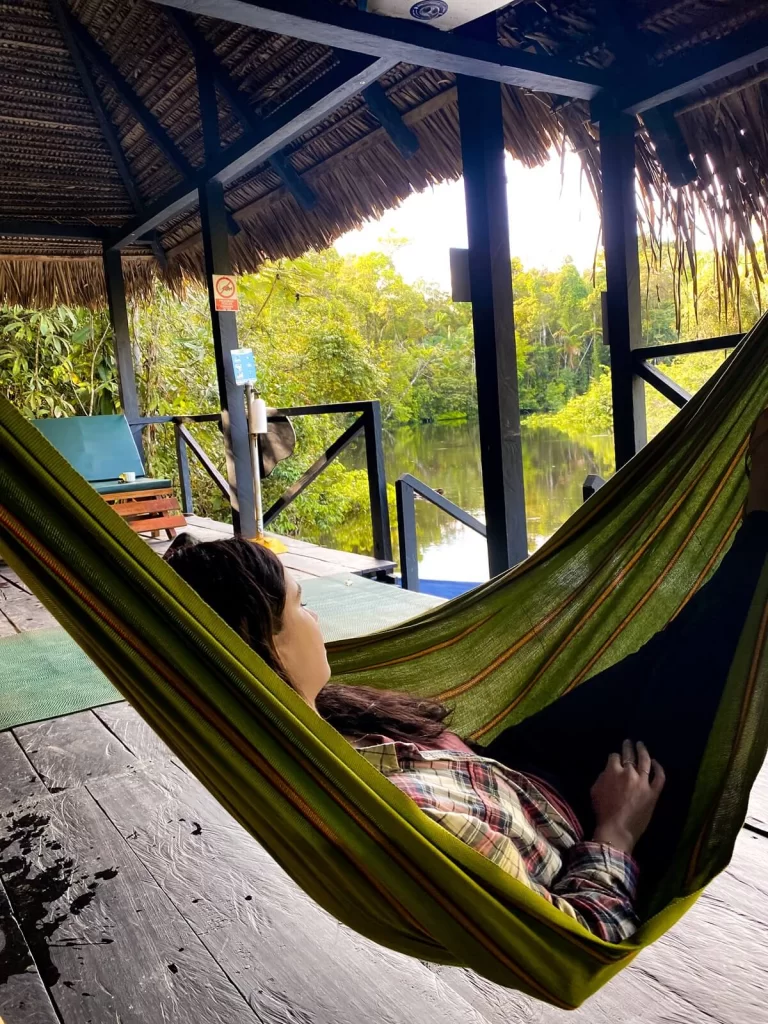
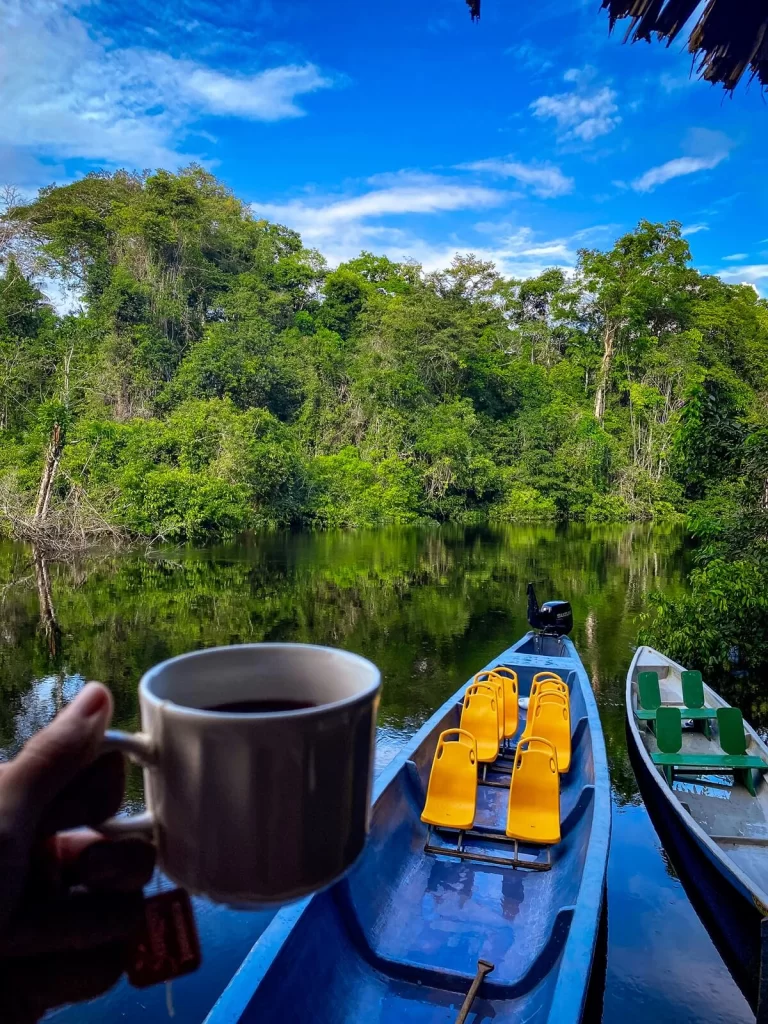
9. Relaxing Around Your Lodge
Depending on your lodge, you’ll normally have some breaks during the day to relax a little. It’s a great time to grab a drink and chill in a hammock whilst overlooking Cuyabeno River.
Your lodge might also have an observation tower so you can try to spot some wildlife, or sometimes they’ll have paddle boards so you can paddle around in the vicinity of the lodge.
Our lodge said that it’s normally safe to swim around the lodge, but after seeing that 4m long black caiman so close to another one, we decided not to go into the river.
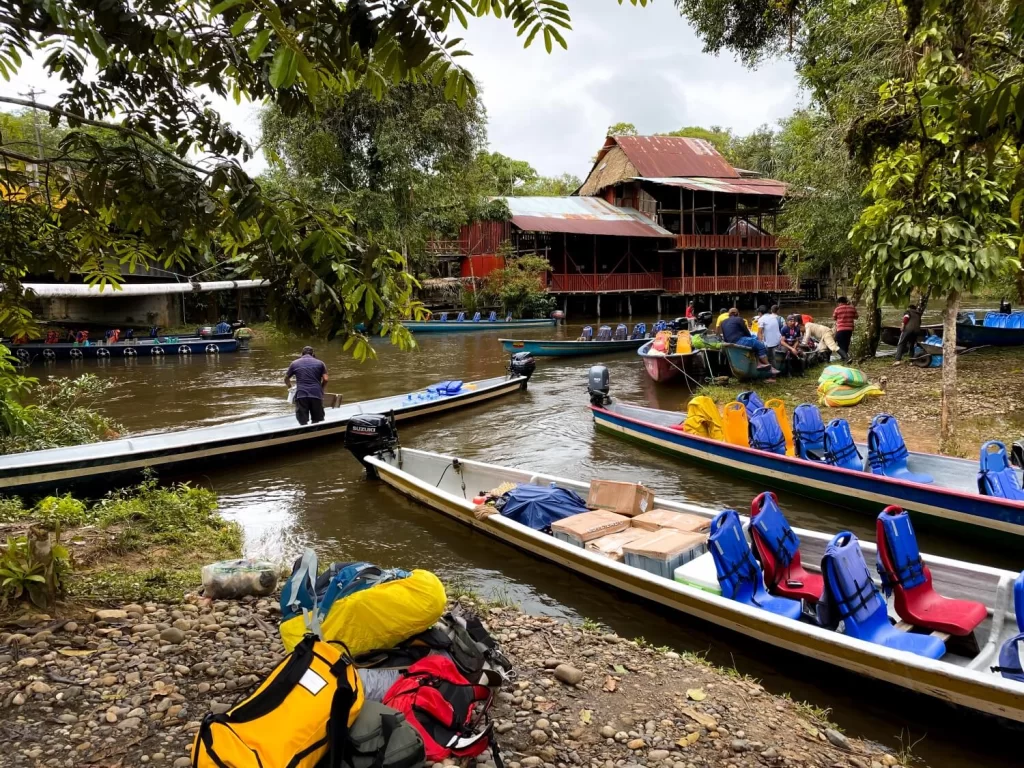
How to Get to the Amazon Rainforest in Ecuador
No matter which part of the Ecuadorian Amazon you’re planning on visiting, you’ll have a long travel day ahead of you. When you look at the map, the distance between Quito and Cuyabeno might not look that great. However, the two locations are nearly 400 km (~250 mi) apart. The lodge we stayed at in the Amazon Rainforest is definitely the most remote location we’ve been to so far. It took us a long time and a few different modes of transport to get there.
The journey to Cuyabeno Wildlife Reserve from Quito can be split into two main parts:
- Quito to Cuyabeno Bridge (Puente Cuyabeno),
- Cuyabeno Bridge to your lodge in the wildlife reserve.
We put together a detailed blog post on all the different ways you can get to Cuyabeno Wildlife Reserve from Quito. Make sure to give it a read before your visit.
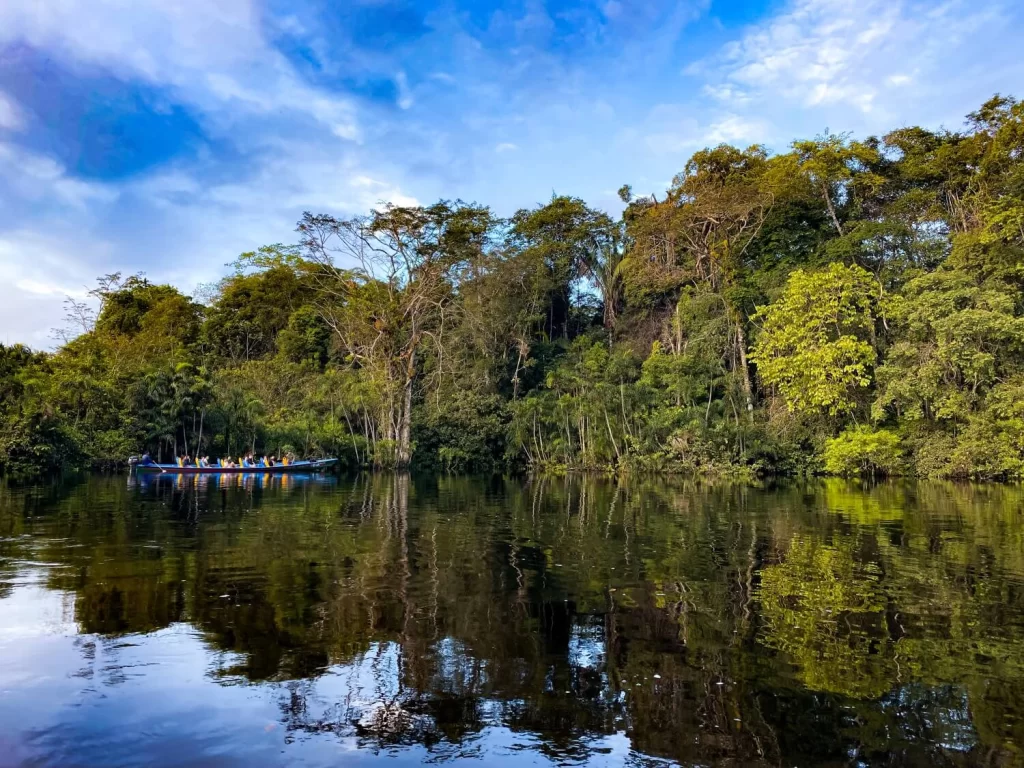
Best Time to Visit the Cuyabeno Wildlife Reserve
You can visit the Cuyabeno Wildlife Reserve at any time of the year. However, it’s good to know that, although you’re in the Amazon rainforest, it still has two seasons: dry and wet.
The dry season in Cuyabeno is from December to February. During this time the Cuyabeno River can decrease massively. Sometimes, Laguna Grande, the huge lake where your lodge takes you to swim, completely disappears. You can still see plenty of wildlife in the dry season, but it’s good to know that some animals, such as pink river dolphins, will migrate to another area at this time. On the other hand, there are going to be less mosquitos.
During this time the temperatures are also much hotter with the average temperatures reaching 35 C / 95 F.
The rainy season is between March and November, with May and June being when you’ll see the most rainfall in the Amazon. In the wet season more of the jungle will be accessible by canoe thanks to the increased river levels. The average temperature is 24 C / 75 F in the wet season. The best perk of visiting the rainforest during this time is the potential to see more wildlife.
Make sure to time your visit according to what activities you’d want to do and which wildlife you’d want a higher chance of spotting in Cuyabeno.
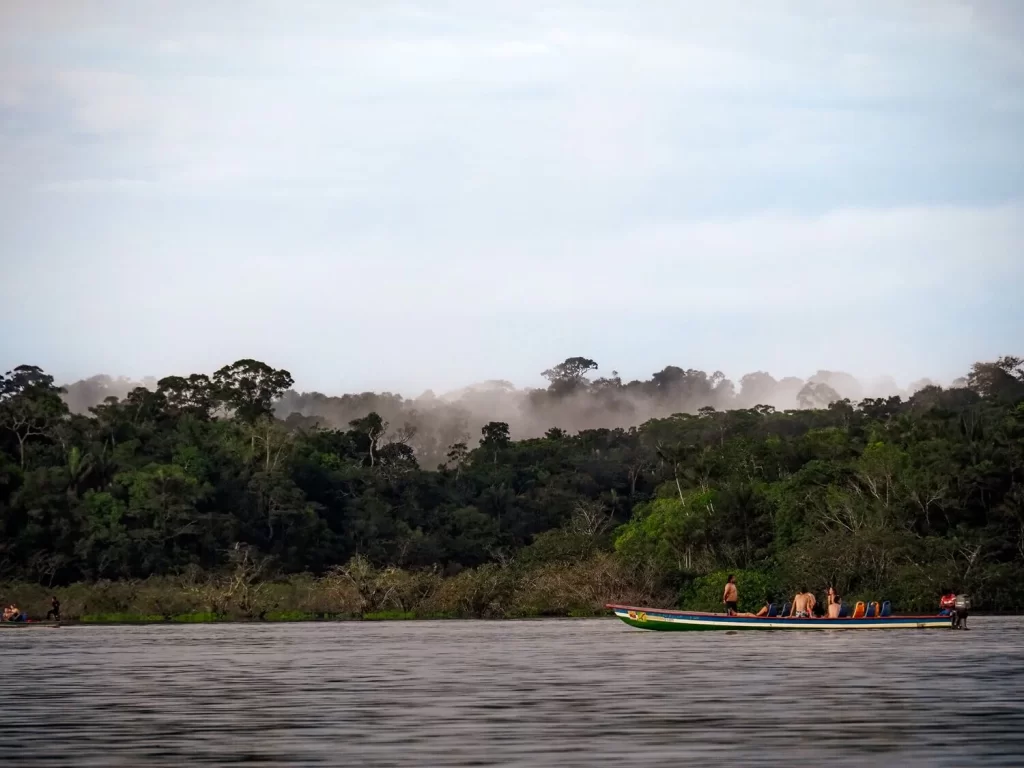
Final Thoughts on Activities in Cuyabeno Wildlife Reserve
We definitely enjoyed all the activities that were offered by our lodge during our visit to Cuyabeno Wildlife Reserve. Seeing creatures in their natural habitat is something we’ll never forget and will be forever grateful for. We also thoroughly enjoyed our day and night hikes through the thick jungle. The night hike is definitely going to be something we’ll never forget. Learning about the life of the communities who call the Amazon Rainforest home was also very interesting.
Have you ever been to Cuyabeno Wildlife Reserve or another part of the Amazon Rainforest? If so, what was your favourite activity? If not, would you add a visit to Cuyabeno to your bucket list? Let us know in the comments below.
Now, let your adventure begin,

Our Top Travel Resources
Accommodation: For hotels we always use Booking.com and Hostelworld for hostels. We also book longer stays on Airbnb or Vrbo.
Flights: To find the best flight prices we always check Skyscanner, Google Flights or WayAway. Then we also check the airlines’ websites too for comparison.
Car Rentals: We use Discover Cars when we want to rent a car as it compares local, national and international companies.
Activities: If we book organised tours we always check either GetYourGuide or Viator.
Foreign Currency: Whenever we can we prefer to pay in local currency and for that we always use our Wise card. We can easily withdraw money from the ATM or pay by card at most shops and restaurants.
Travel Insurance: We never go anywhere without travel insurance. You never know what will happen on your trip, so good travel insurance like SafetyWing can protect you in case of injury, illness, theft and cancellations.
eSIM and VPN: To get data abroad we use Airalo which is an app that allows you to download a prepaid eSIM to your phone in over 190 countries. Make sure to have a VPN to avoid hackers accessing your personal data when using public WIFI. We use Surfshark which is the only VPN that offers one account on unlimited devices.

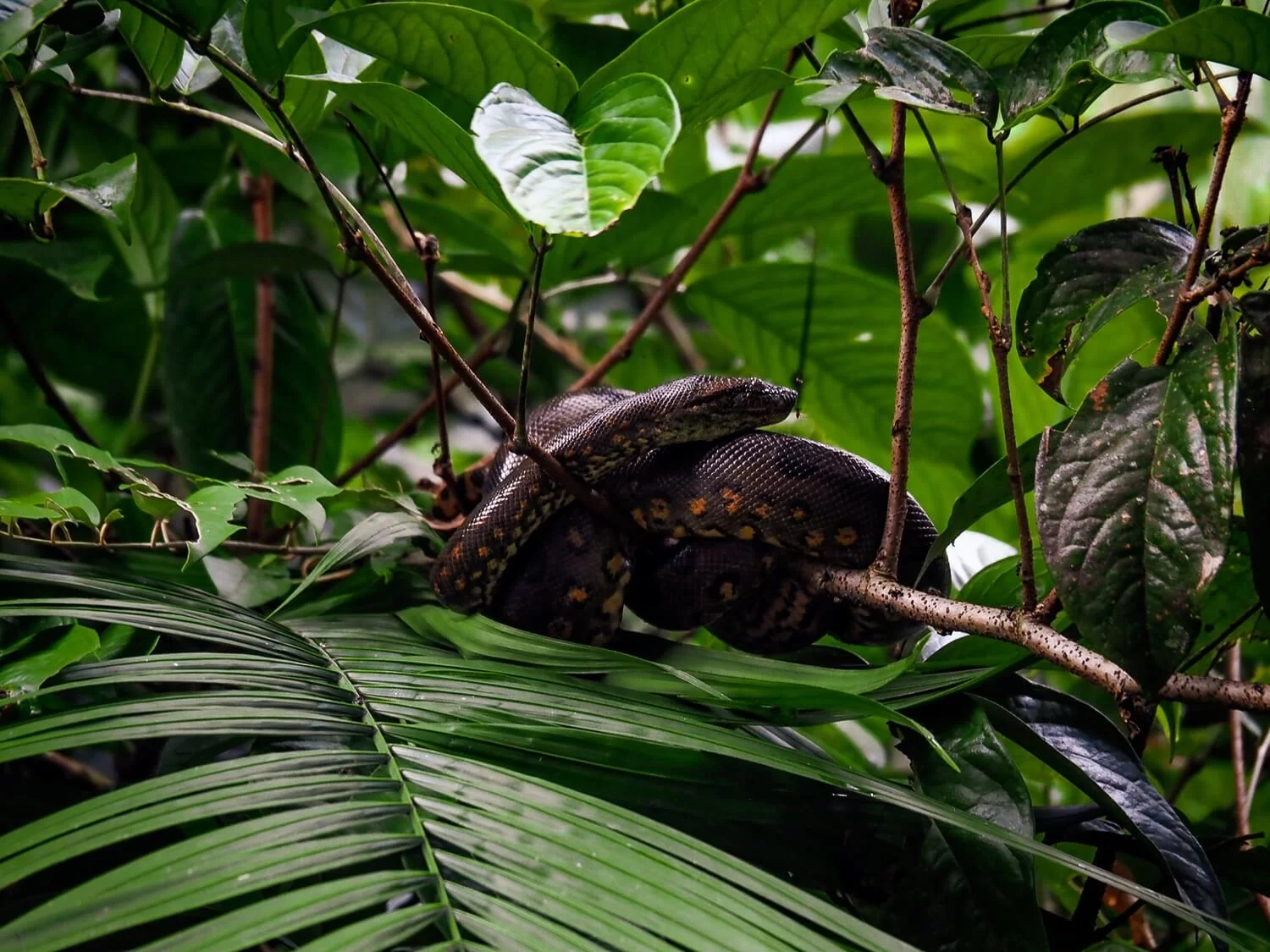
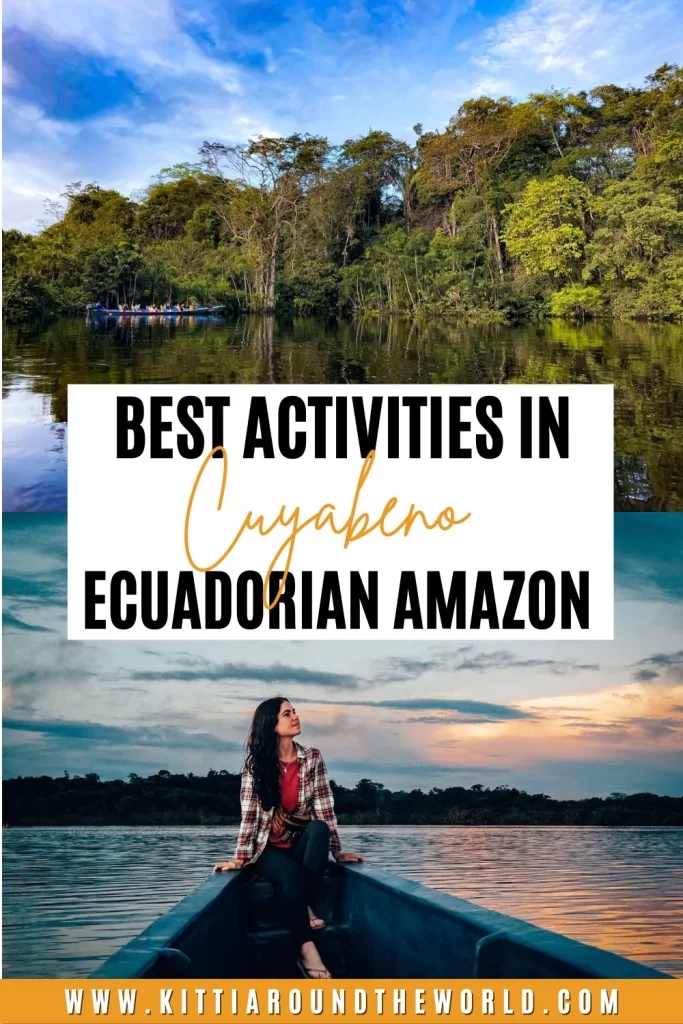
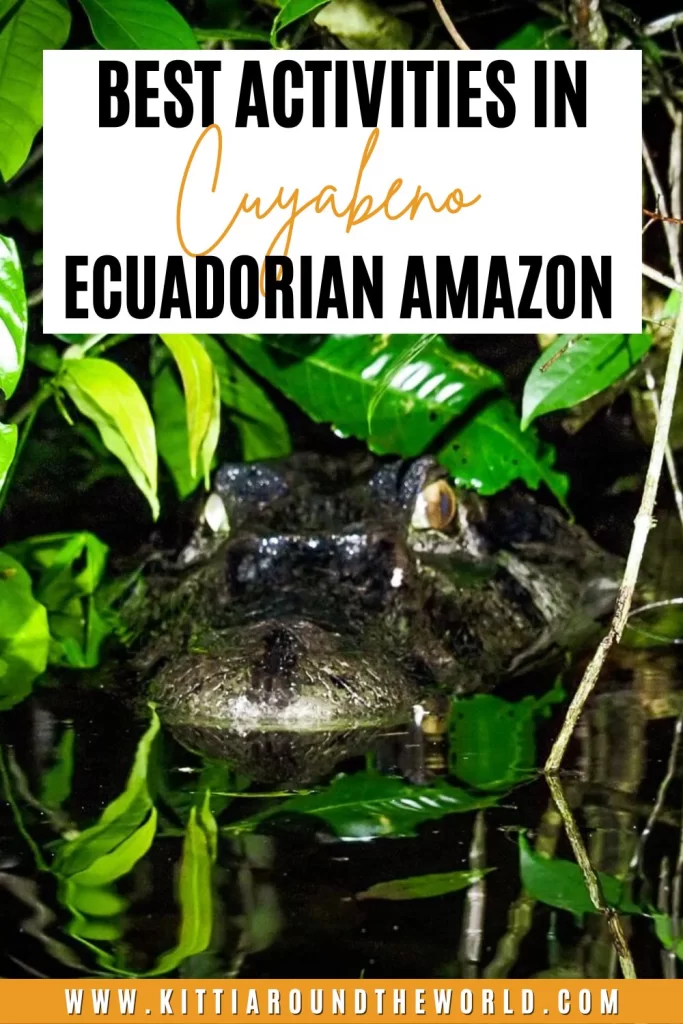
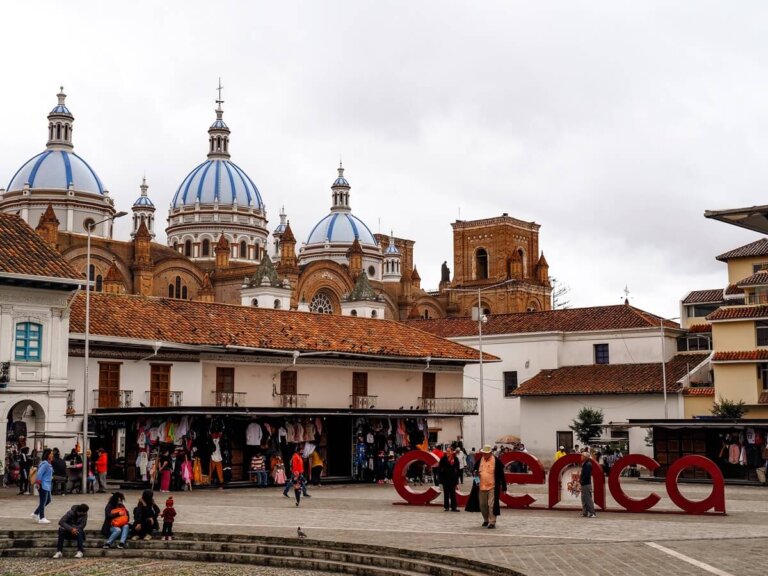
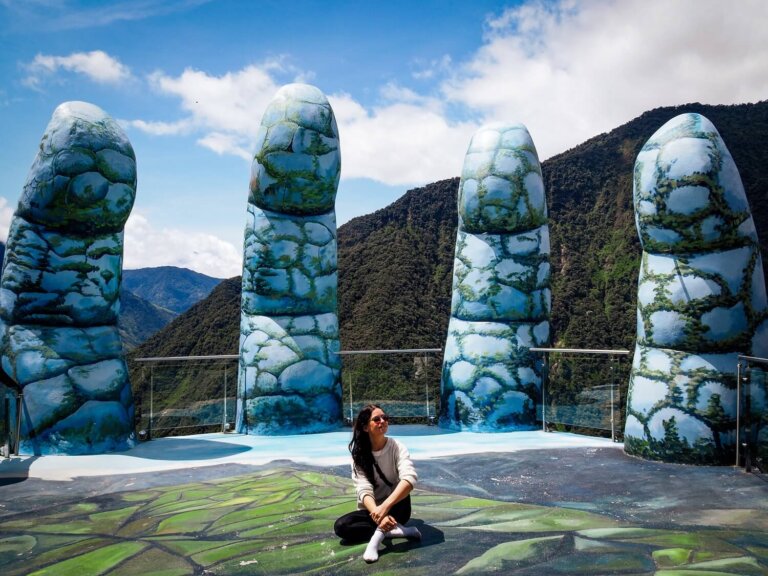
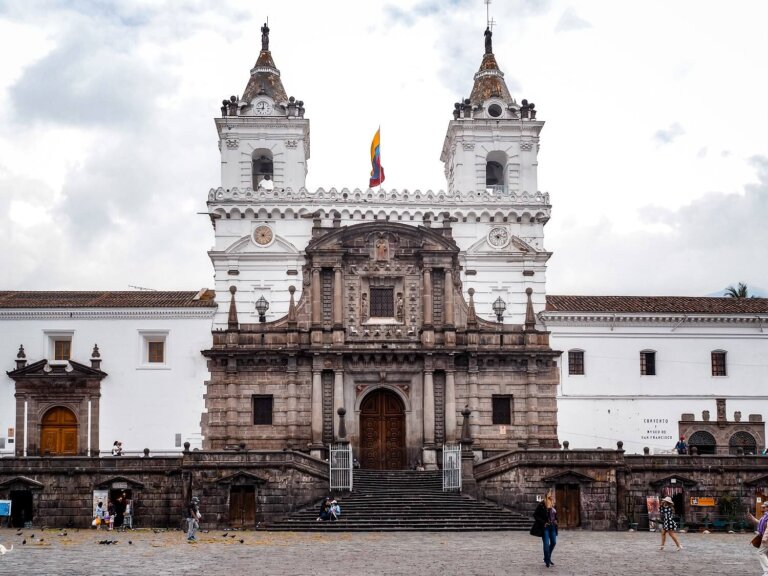
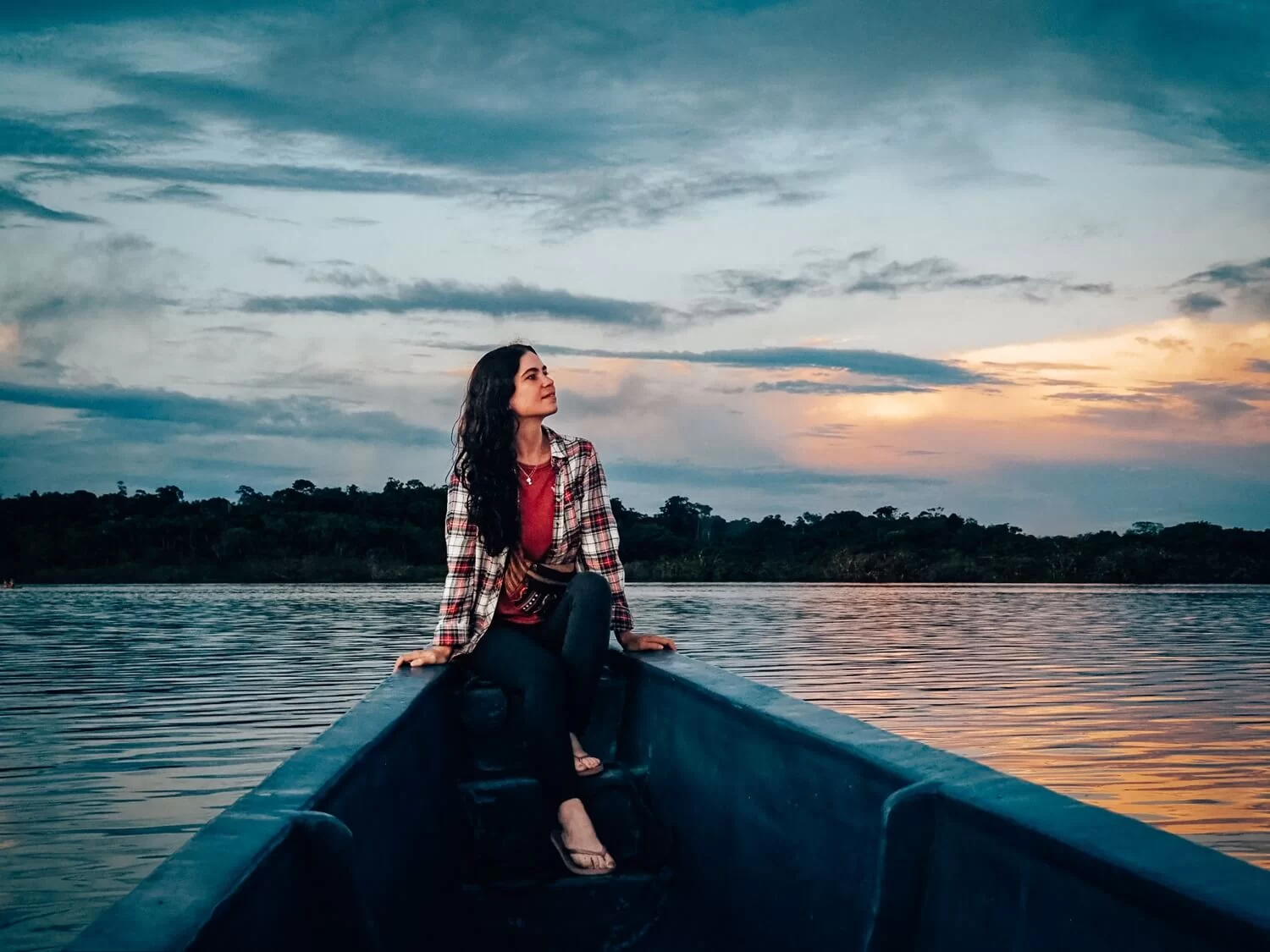
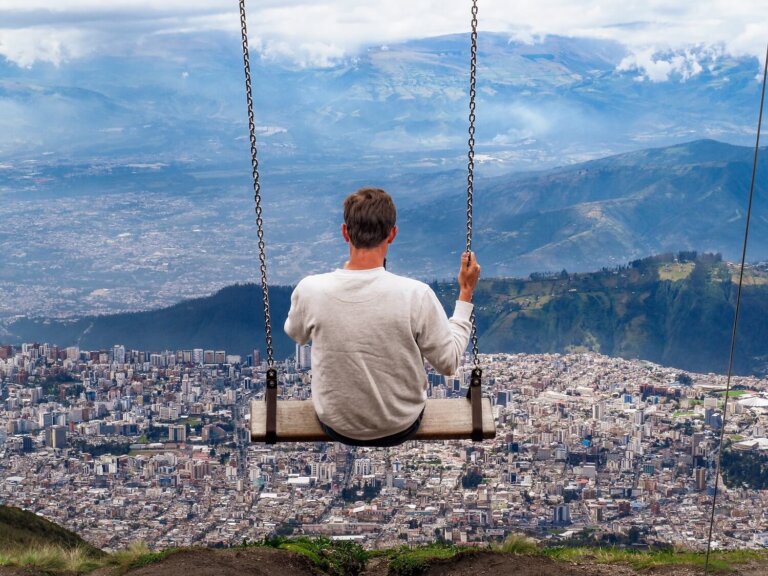
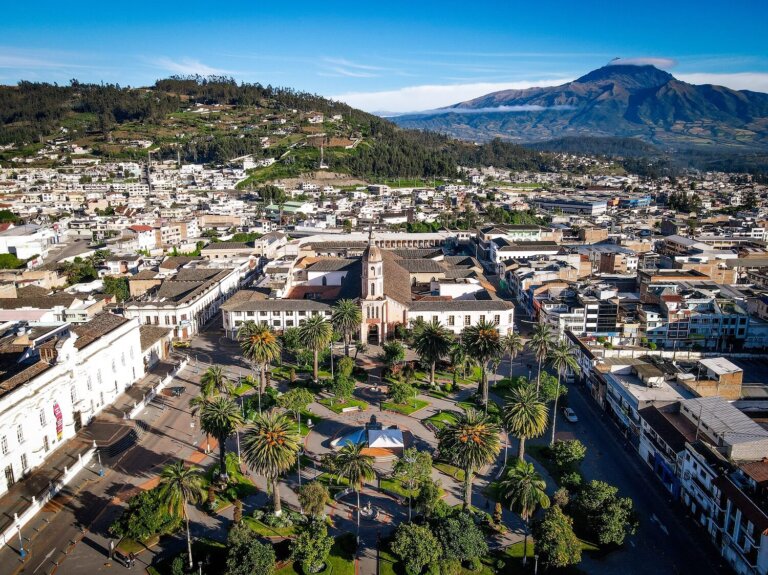
I’m hoping to travel to Ecuador in the next few years and I will definitely reference this when my trip gets closer! Thank you!
Thank you so much Annie, it means a lot. I’m sure you’ll love Ecuador too.
This is on my bucket list so thank you, this post will make planning so much easier.
Thank you Sharyn, hope you can visit soon.
I would looove to see some pink river dolphins! Ecuador is high on my list to visit!
It was such a great experience, although they were too fast and couldn’t quite catch them on the camera!
Would love to hike in the Amazon rainforest some day!
It was such a cool experience!
This looks like a fantastic place. Ecuador is on our short-list for travel in the next few years. Definitely bookmarking this one for later.
Thank you so much. Hope you’ll find our other Ecuador guides just as useful.